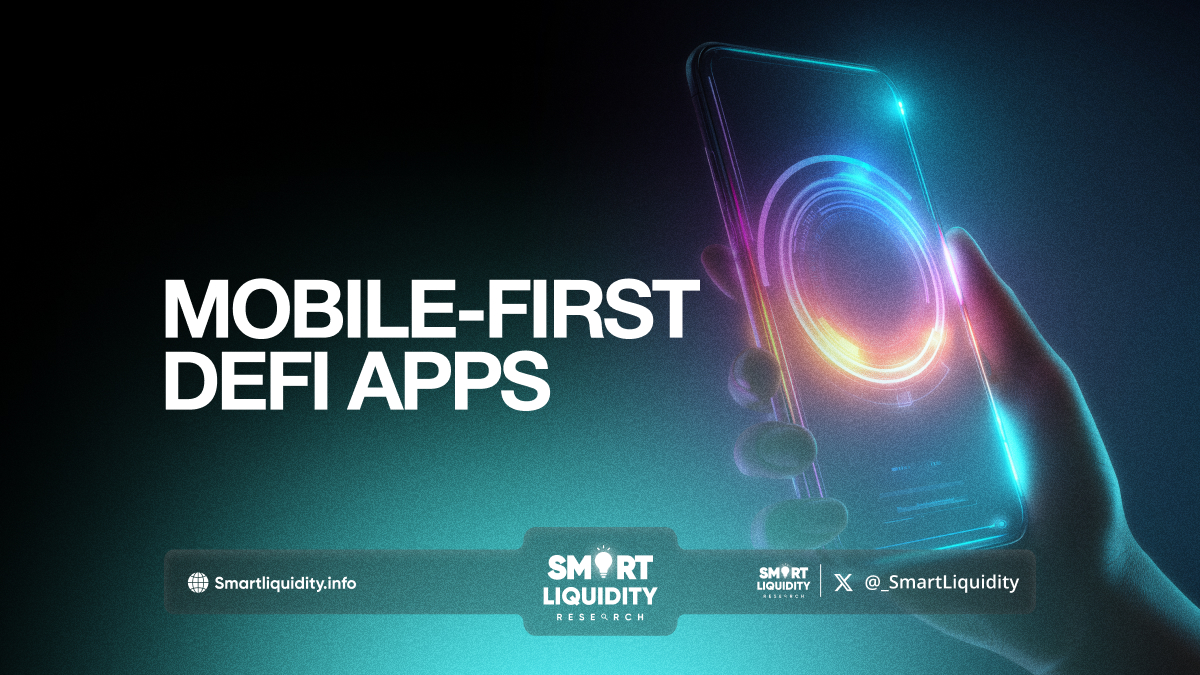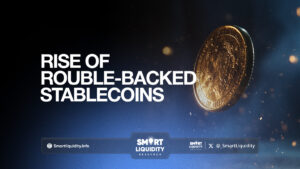Mobile-First DeFi Apps


DeFi has grown into a powerful force challenging traditional finance, yet it remains hard to access for many—especially in mobile-first regions. The future lies in mobile-first DeFi apps with simple UX, embedded wallets, and fiat on-ramps. This article dives into key trends, tech, projects, UX, and challenges.
Why Mobile-First Design Matters in DeFi
Over 5.3 billion people worldwide use mobile phones, and for many, it’s their only computing device. This is especially true in parts of Africa, Southeast Asia, and Latin America, where mobile internet access outpaces broadband penetration. Designing DeFi for mobile-first users isn’t a luxury—it’s a necessity.
Traditional DeFi platforms like Uniswap, Compound, or Aave were built with the assumption that users would interact via a desktop browser with a MetaMask extension. But in mobile-first economies, expecting users to write down seed phrases, toggle gas settings, and copy-paste wallet addresses simply isn’t realistic.
Key Drivers of the Mobile-First Shift:
- Lower hardware entry barrier: Smartphones are significantly cheaper and more available than laptops or desktops.
- Familiar UI expectations: Users are used to TikTok-like simplicity and WhatsApp-level speed.
- Digital cash ecosystem: Regions with strong mobile money systems (like M-Pesa in Kenya) are primed for crypto-based alternatives.
By tailoring experiences to the realities of mobile usage, DeFi apps can unlock financial access at scale, serving populations historically excluded from formal banking systems.
Technical Considerations: Building for Mobile from the Ground Up
Mobile-first development is not simply about shrinking a web app to fit a smaller screen. It involves rearchitecting the underlying systems for speed, affordability, usability, and intermittent connectivity. Mobile users often face limited bandwidth, inconsistent connectivity, and constrained storage. Mobile-first DeFi apps must account for this from both front-end and back-end perspectives.
Challenge | Mobile-First Solution |
High gas fees | Layer-2 integration (Arbitrum, Base), transaction batching |
Complex wallet flows | Embedded wallets (e.g., Magic.link, Web3Auth), social recovery |
Device & bandwidth limits | Light clients, compressed data sync, local caching |
Signing transactions | Biometric authentication (Face ID, Touch ID) |
Offline functionality | Progressive Web Apps, delayed transaction broadcasting |
In addition, modern mobile-first DeFi architectures utilize SDKs like WalletConnect v2, RainbowKit, and web3modal to streamline wallet connection, authentication, and transaction signing flows. Developers also prioritize modular backends, enabling pluggable components like fiat gateways, KYC, or notification systems to enhance flexibility and compliance.
Top Mobile-First DeFi Projects Paving the Way
Several protocols and platforms are pioneering this transition by prioritizing mobile accessibility, intuitive UX, and regional relevance:
Celo
A Layer-1 blockchain purpose-built for mobile adoption, Celo enables dApps to use phone numbers as wallet identifiers. It emphasizes carbon-negative infrastructure, low gas fees, and local stablecoins (e.g., cUSD) tailored for real-world use.
Valora
An intuitive, mobile-native wallet built on Celo. Valora allows users to send money via contact lists, access DeFi earning tools, and participate in savings circles—all with a few taps. Its minimal design masks powerful crypto functionality beneath.
Kima Network
Kima focuses on bridging mobile-first DeFi with real-world payment systems, integrating decentralized liquidity with mobile banking APIs and cash-out rails. Its core value lies in enabling borderless P2P payments and remittances.
Bluejay Finance
This protocol issues stablecoins pegged to local fiat currencies across Southeast Asia (e.g., SGD, IDR). It’s designed for mobile apps and wallets looking to serve regional markets without relying solely on USD-pegged assets.
Num Finance
Popular in Latin America, Num provides mobile-ready DeFi solutions for regional remittances, interest-bearing stablecoins, and real-world asset integration.
These projects aren’t just making DeFi more portable—they’re culturally and economically contextualizing it, meeting users on their own terms.
UX Innovations Powering the Mobile DeFi Revolution
A seamless user experience is critical for mainstream adoption. Mobile-first DeFi apps are borrowing principles from consumer tech to create intuitive, delightful interfaces.
Key UX Breakthroughs:
- Seedless onboarding: Wallets auto-generated with device biometrics or social logins.
- Plain-language transactions: Replacing confusing hashes with “Send $5 to Ana.”
- Push notifications: For yield updates, repayment reminders, or gas fee optimization.
- Gamified finance: Streaks, badges, and rewards to encourage healthy financial habits.
- Localized UI: Multilingual interfaces with native currency support and region-specific UX flows.
These improvements reduce the cognitive burden and create a “super app” feel, where users can lend, borrow, swap, and send without needing to understand DeFi’s underlying mechanics.
Risks, Trade-Offs, and the Road Ahead
As promising as mobile-first DeFi is, it comes with risks and systemic considerations:
Security Challenges
- Mobile phones are more vulnerable to phishing, SIM swaps, and malware than hardware wallets.
- Centralized services like cloud wallet storage or OTP-based logins pose new attack surfaces.
- Social recovery, while user-friendly, must be implemented with caution to prevent abuse.
Regulatory Pressure
As mobile-first DeFi overlaps more with fintech, regulators may demand:
- More stringent KYC/AML compliance
- Licensing for fiat on- and off-ramps
- Data privacy guarantees under laws like GDPR or Indonesia’s PDP Law
User Trust and Education
Mass-market users need assurance that:
- Their funds are secure, even in volatile markets
- They understand the risks of yield farming or token swaps
- There are support channels in case something goes wrong
Without proper education, safeguards, and transparent communication, users may become disillusioned—or worse, exploited.
Comparison Table: Mobile-First vs Desktop-First DeFi
Feature | Mobile-First DeFi | Desktop-First DeFi |
Onboarding Flow | Phone number, biometrics, seedless auth | Seed phrase, browser extension |
User Interface | Touch-friendly, minimal, intuitive | Rich dashboards, often complex |
Connectivity | Offline caching, native app integration | Browser-dependent |
Use Cases | Remittances, savings, microloans | Advanced trading, high-yield strategies |
Target Regions | Emerging markets, mobile-native users | Developed markets, crypto-savvy users |
Wallet Type | Embedded, custodial or semi-custodial | Non-custodial (MetaMask, Ledger) |
Learning Curve | Low | Moderate to high |
Scaling DeFi Through Mobile-Native Infrastructure
The next phase of DeFi won’t be defined by flashy APRs or speculative tokens—it will be measured by real-world usage. And for that to happen, DeFi must become invisible to the user, embedded within mobile experiences that feel natural, secure, and intuitive.
Mobile-first DeFi apps are uniquely positioned to bridge the usability gap by combining technical innovation with human-centered design. Whether it’s a gig worker in Jakarta saving $2 a day, or a family in Bogotá sending remittances from abroad, the tools of financial empowerment must fit in their pocket—not just on a laptop.
With continued development across wallet tech, UX, modular protocols, and layer-2 scalability, the mobile-first DeFi movement is not just a trend—it’s the inevitable foundation of a global, inclusive financial future.




